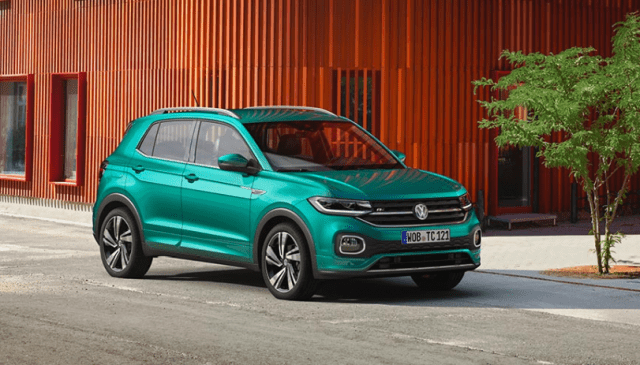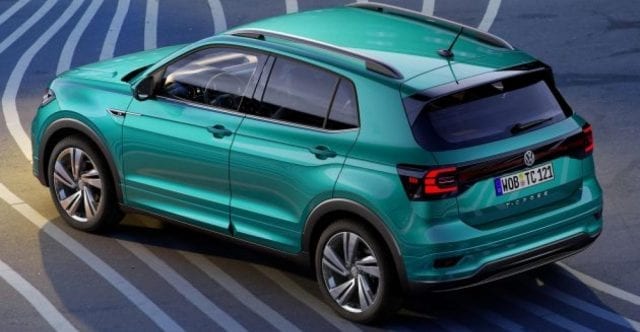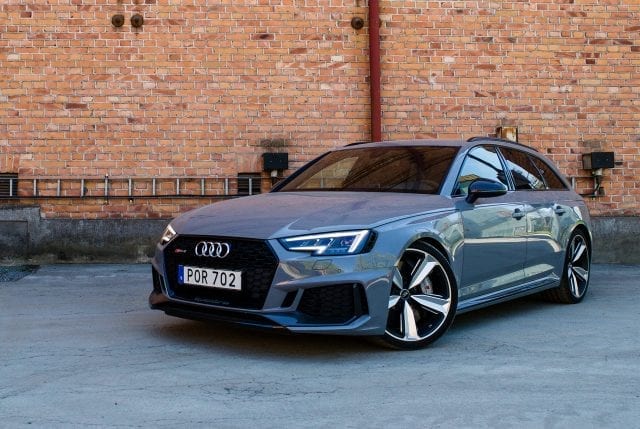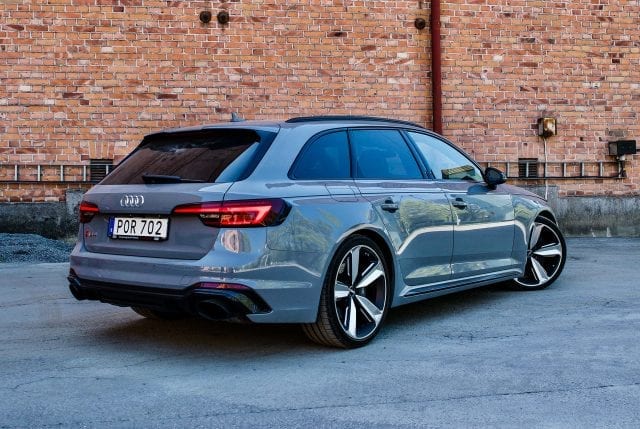
Volkswagen’s first compact national SUV has barely hit stores and wants to mark territory. But not for less. After all, T-Cross has enough qualities to achieve the bold goal of the brand to sell between four and five thousand units per month. But to get the leadership of the segment, you will have to face strong competition that will have the knife in your teeth. And look what we are talking about models like the Hyundai Creta, the Honda HR-V and the renewed Ford Eco sport, now also sold without the steppe set behind. However, even before leaving home to face these tough opponents, the top-of-the-line T-Cross 1.4 Highline has a tough mission. A to attract interested customers in the brother imported from Mexico, Tijuana Allspice 250 TSI, with whom it shares platform ( MQB ) and engine. The 1.4 turbo flex (250 TSI) direct injection with 150 hp and 25.5 km. On the other hand, the T-Cross is equipped with a Tiptronic automatic six-speed gearbox. The Tijuana uses the dual-clutch DSG transmission and six speeds. For more details about car accessories click on car cover.
And it’s not just in mechanics that they have similarities. The top-of-the-line version of T-Cross costs $ 109,990 and can reach $ 125,000 when equipped with all options. The basic Tijuana Allspice is priced at R $ 128,990. A differential of the Tijuana is its suspension. While the T-Cross features a McPherson strut at the front and a torsion bar at the rear , the Tijuana also uses the McPherson strut at the front, but it does have a multilink back . But is that enough to take the bigger cousin? The utilities are still different in the offer of space, equipment and performance. Follow the domestic rivalry and check out what you get and lose by choosing to take each of them to your garage.

Performance:
– T-Cross 1.4 (1.292 kilos): 0 to 100 km / h in 8.7 seconds (manufacturer)
– Tijuana 1.4 (1,562 kilos): 0 to 100 km / h in 9.5 seconds (manufacturer)
– Both have a top speed of 198 km / h.
Consumption:
– T-Cross makes 7.7 km / l in the city and 9.3 km / l on the road when fueled with ethanol. And 11 km / l and 13 km / l , respectively, with gasoline. Tank of 52 liters (combined range of 624 kilometers with gasoline)
– Tijuana makes 6.8 km / l in the city and 8 km / l on the road when fueled with ethanol. And 10.1 km / l and 11.7 km / l , respectively, with gasoline. Tank of 58 liters (combined range of 632 kilometers with gasoline)
Internal space:
– T-Cross: 2.65 meters of wheelbase, 1.75 meters wide and 373 liters of trunk .
– Tiguan: 2.79 meters of wheelbase, 1.83 meters wide and 710 liters of trunk .
Serial and finishing items:
The T-Cross is commendable elements, others less so. This is the case of the inner lining. In a closer look, it is noticed that virtually the whole cabin is lined with hard plastic. However, the top-of-the-line version, Highline, is more complete and features such items as digital air conditioning, electric steering, ABS brakes, electric mirrors, start-stop, rain sensor, twilight sensor, automatic post- 6 airbags (front, side and curtain), traction and stability control, start assist on ramps, electronic differential lock and tire pressure control indicator. The national SUV also takes advantage by offering standard items such as rear camera, headlights with daytime running lights, leather seats and key holder. The T-Cross can also be equipped with the following options: 8-inch touchscreen digital multimedia center console with Android Auto and Apple Car Play ( R $ 4,000 ). Electric and panoramic solar ceiling ( R $ 4,800 ), Park Assist, full-LED headlights and Beats sound ( R $ 6 thousand ).
The basic version of Iguanas a good finish, with good quality materials that are more refined than those found in the rival. But while counting on good items, the SUV does not shine the eyes of those who like technology cars. It is worth remembering that for this price, we are talking about the entry version of the average SUV. As standard, it is equipped with items such as digital air conditioning, electric steering, ABS brakes, and electric parking brake, electric mirrors, start-stop, rain sensor, proximity sensor in front, 6 airbags (front, side and curtain) and traction and stability control, fog lights and tire pressure drop indicator.
TEST: AUDI RS 4 IS FOR FAMILIES VERY SPEED

In a world populated by SUVs, there are SUVs that will survive on account of inner space, day-to-day practicality, and sedan-like behavior. But one of them in particular will remain only in the name of the pleasure of having something ultra-fast for an escape to the supermarket or a run to the children’s college. I’m talking about the Audi RS 4, a superstation of R $ 546,990. The V6 2.9 has the same 450 hp of the V8 and, as a good turbine, its torque of 61.2 kgfm is muscle car and reaches between 1,900 and 5,000 rpm, while the predecessor did the same at 4,000 rpm. I already knew that the car was faster and “crooked” than the previous model, but my question was emotion, which is not condensed by cold numbers – even if they are very hot! Change can be considered a return to origins. After all, the first RS 4 came in 1999 with V6 2.7 engine 380 hp from the coach Bosworth. The V8 itself was adopted in subsequent generations. Even the predecessor RS2 used a turbo charged, a five-cylinder 2.2 from 315 hp and tuning made by Porsche. After some waiting, the RS 4 appeared on the platform of a VW truck. Before I even went down, she had already convinced me in style. The malevolent front expresses its aggressiveness on points such as the huge hexagonal grid and the air intakes integrated into the baffles. Fenders are pure nostalgia. The inspiration came from the Audi Quattro rally, launched in 1980 and converted to the streets. From so wide, they even have inserts that mimic entrances and extractors of air. The huge spoiler at the rear matches the sturdy exhaust ports. When starting, the severe snoring spreads in muffled waves. The old one was metallic, and by that time it would have made some birds if they mollified with an unnecessary sweep of the accountant. There is no way, the turbots steal the exhaust gases, which return to admission and, in turn, deliver that magic.
The RS 4 has the simplest starting control: simply turn off the stability control on a button, hold the brake and press the accelerator until the over boost indicates the maximum. Then just release the brake and keep the foot down to shoot from zero to 100 km / h in 4.1 seconds – is much faster than the predecessor, which did this in 4.8 s. The resumes also compress time and space, while the brakes are to leave marks of the belt in the chest: 23.2 meters of 80 km/ha zero. The eight-speed automatic replaces the old dual-clutch DSG and seven gears without compromising on speed. Another responsible for the performance is the Quattro traction, which plays 60% of the force in the rear to give that over-esterque way. If accurate, up to 70% of the force goes forward and 85% behind.
The “turbo bug” had already contaminated me, but I could not get off track with it. The way was to take several warm laps. The digital dashboard features the featured gyroscope, and in sports mode it uses green, yellow and red to indicate the timing of the changes. The speed on the straight went from 240 km / h with ease; and the limiter at 250 km / h can be eliminated, allowing it to reach 280 km / h. I was lucky: the guy who brought the van did not come back, and Audi asked me to take the RS 4 back to . Thanks, driver, wherever you are! On the road, the van showed up in his hand. The weight 80 kilos smaller, equivalent to an adult, left RS 4 more delicious to touch. Even an intense rainfall did not disturb, only the aquaplaning of the wide tires made me take off my foot.
Upon arriving in the RS 4 was capricious walking on imperfections. In Dynamic mode, it does not swallow up the floor fumbles, but in Comfort the bumps are minimized and the spin is decent. In space, only the central tunnel disrupts a fifth adult; four are well-accommodated – including luggage, thanks to the 505-liter boot. The compartment also has electric back cover, which can be remotely driven on the key.

And the family is doing well. The front seats have three massage programs to relieve tension during traffic jams and track days; the sound of Bang & Olufsen, with 19 speakers, is one of those that makes you listen to notes you’ve never noticed in your favorite music; and the leather and Alcan Tara jackets make everything cozy. In addition to this, cruise control is now adaptive and follows traffic. Too bad that the multimedia continues to be unresponsive to the touch. Another, however, is the average consumption of 7.9 km / l, a slight improvement compared to 7.3 km / l of the old one. It’s the only number that does not impress on such a superlative wagon.





